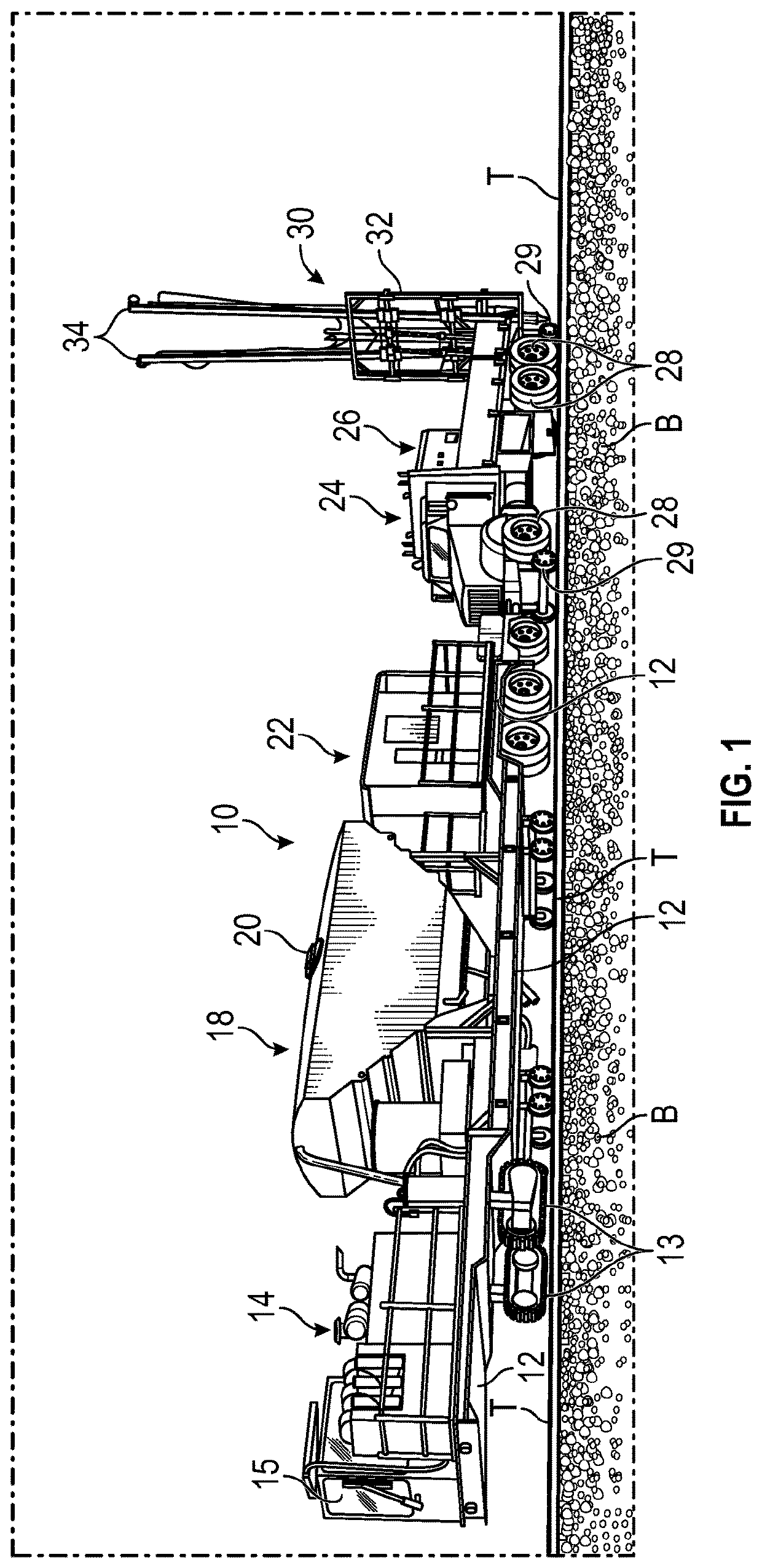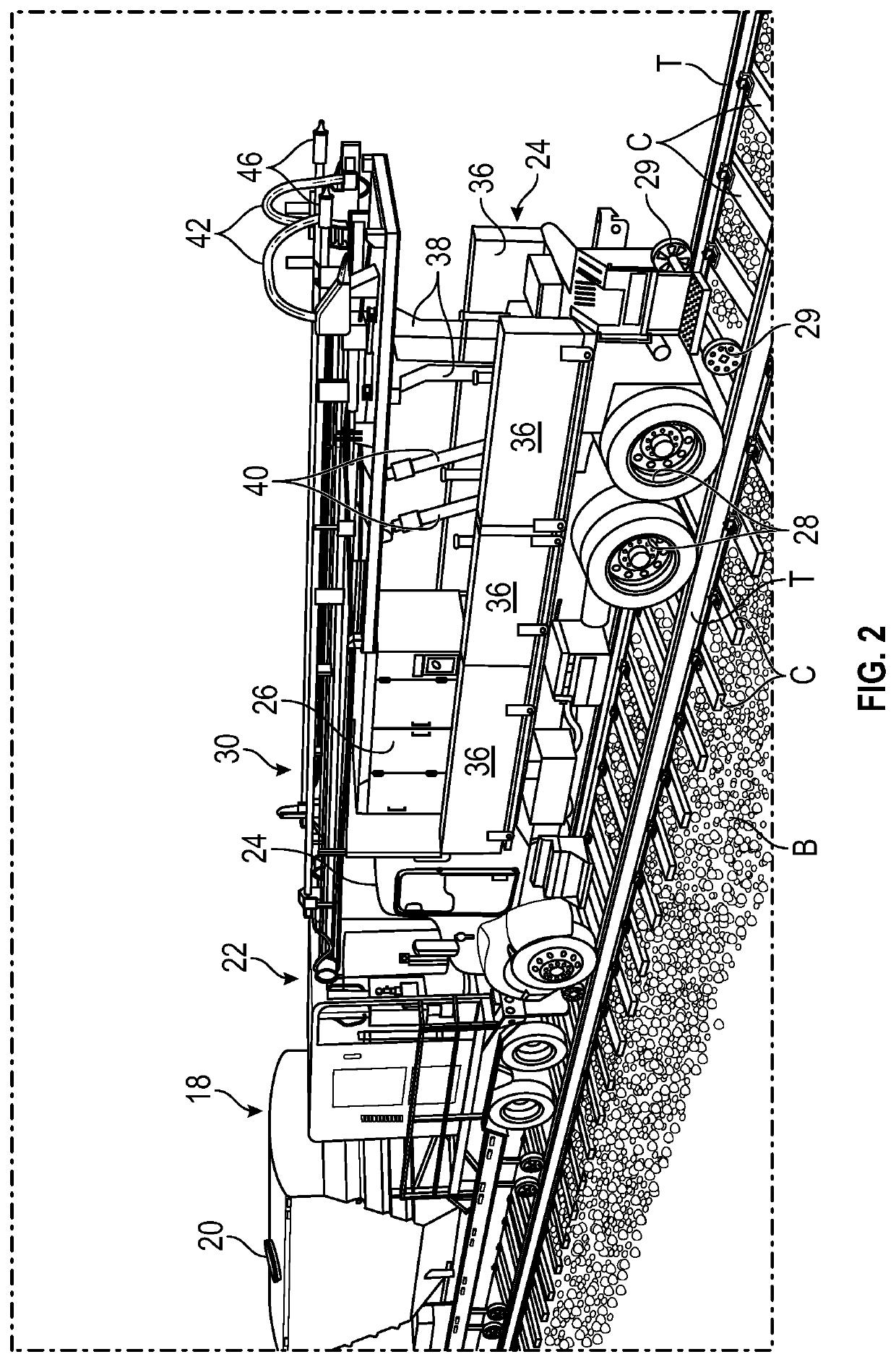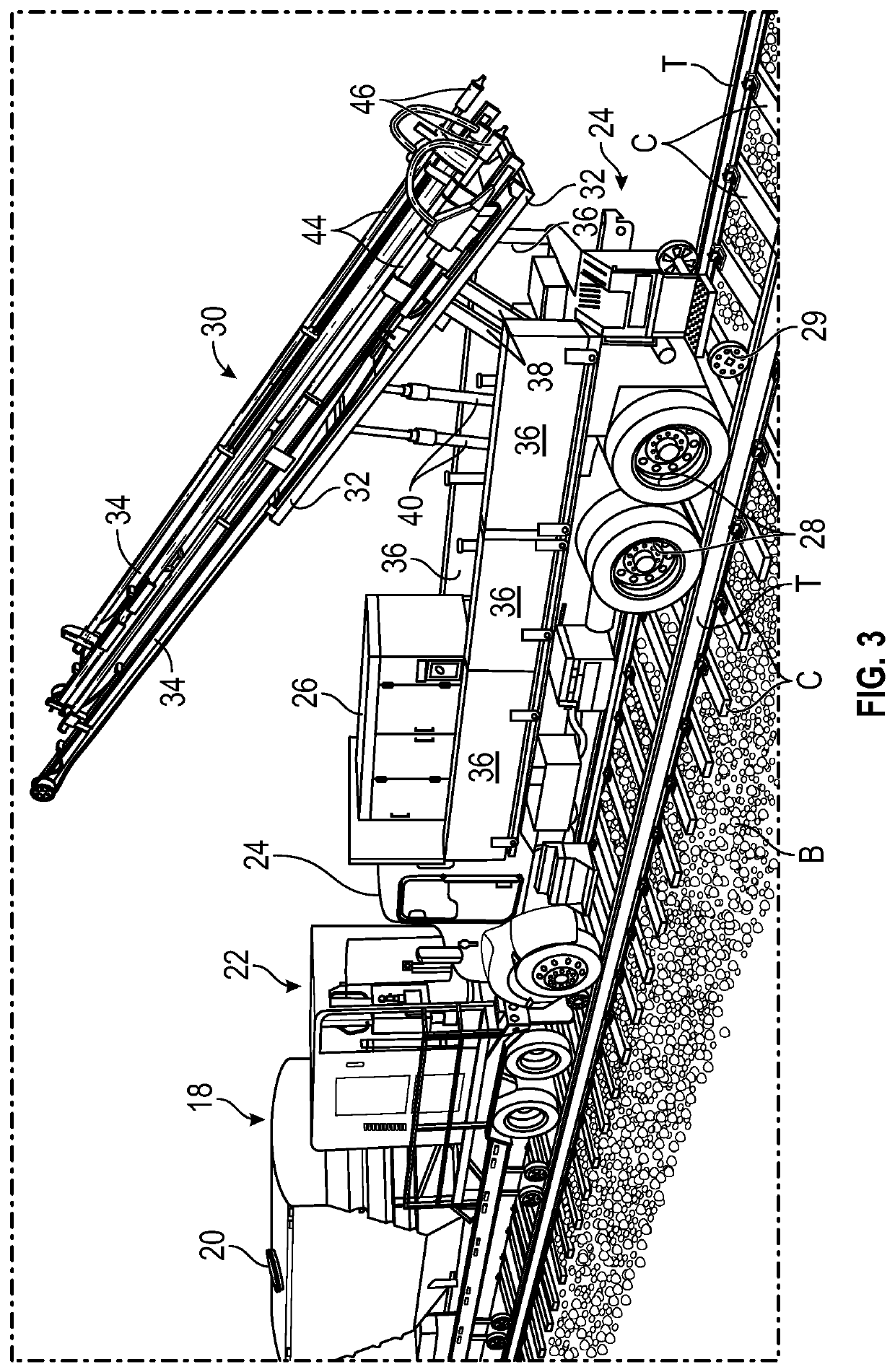[0010]According to one preferred embodiment, the invention is a method of installing subsurface inclusions comprising injected slurry mixtures of stabilizing material such as cement grout mixed with in situ soil. The inclusions may substantially increase subgrade bearing capacity and shear strength. The inclusions when installed are in the general shape of a cylindrical column with a selected diameter and depth depending upon the subsurface and subsoil conditions to be repaired. One example range for the diameter of the inclusions is 8 to 16 inches in diameter. One example range for the depth of the inclusions may be 10 to 30 feet deep.
[0015]Inclusions and ballast fills in one aspect may communicate with one another so there is a continuous amount of slurry mix which interconnects one or more inclusions and a ballast fill. Alternatively, a ballast fill may be installed as a single support element in situations where the subgrade beneath the ballast pocket may be stable and therefore does not require an inclusion.
[0017]According to another preferred embodiment of the invention, it includes a method of installing a selected array of ground inclusions and ballast fills for a rail bed. According to one aspect of this method, holes are selectively drilled within the subgrade and / or subsoil to emplace a selected number and spacing of inclusions. Ballast fills are selectively located at the locations of corresponding ballast pockets such that the ballast fills eliminate spaces defined by the ballast pockets that typically hold water and cause track instability. The ground inclusions and ballast fills may include cement grout, a slurry mixture of cement grout and soil, or other combinations of materials. In areas where there is frequent train traffic, the injection of the repair material may be accelerated so that installed inclusions may obtain initial sets within 30 minutes to 2 hours depending on dosages and traffic windows available for injection. The inclusions will not be degraded by train traffic within this initial cure period. Preferably, the top of the inclusions are terminated at the bottom portion of the clean ballast, which may be approximately 2-3 feet below the track to ensure that the track bed loads are distributed over the inclusion array and to prevent over stressing individual cross ties or track works or fouling clean ballast and reducing the ability of subgrade and ballast maintenance by railroad personnel. However, it should be understood that the depth of termination for the inclusions can be adjusted to specific ground conditions, railroad specifications or preferences. Depending upon the degree to which ballast is displaced during emplacement of inclusions and ballast fills, some amount of track surfacing may be necessary to reshape the upper ballast layer or level the track.
[0018]According to another aspect of the method of installing the system, the system can be employed within bridge abutments thereby reducing dynamic loads on bridges and the abutments themselves. The presence of ballast pockets or otherwise failing subgrade conditions at bridge abutments results in sometimes significant increases in dynamic loads experienced by the bridge as train traffic passes. Bridge transition design can be improved by emplacing the system which may include gradually increasing inclusion array density and depth as the track approaches the bridge. The increasing subgrade strength and subgrade modulus approaching the bridge will ease the stiffness differential between a track embankment and the bridge structure itself. In this way, the rail track is further stabilized to prevent movement caused by dynamic loading from passing train traffic.
[0019]There are many advantages to the systems and methods of the invention. An economical and efficient solution is provided for improving the stability of soft subgrades thereby substantially reducing overall maintenance costs as well as minimizing interruption to railway traffic or operations. The injected grout material will not foul clean ballast. Therefore, there is no subsequent requirement to clean or replace ballast. There is no waste product produced because the material to be injected is mixed real-time within minutes of being pumped into the ground. All of the equipment is hi-rail mounted and is self sufficient. External or supplemental equipment is not required for any job thereby making the invention a global solution for subgrade and subsoil stabilization. The system of equipment is configured so that access to a desired rail is possible that typical to rail crossings similar to a hi-rail dump truck. Therefore, no support is required from railroad personnel other than basic track protection measures.
[0024]According to another aspect of the invention, it may be considered a method for stabilizing subgrade and subsoil ground layers of a railroad bed underlying a railroad having rails and cross ties, the method comprising: providing a rail mounted vehicle, a drill mast mounted on the vehicle, the drill mast having at least one drill and a corresponding drill head; determining a location on the railroad where the subgrade or subsoil have failed causing destabilization of the ballast upon which the rails and cross ties lie; predetermining an array of inclusions to be emplaced to stabilize the subgrade and / or subsoil, the predetermining step including a measure of a distance and depth for an area to be stabilized at the location; positioning the at least one drill over a first position and forming at least inclusion; automatically moving the at least one drill to a subsequent second position and forming another inclusion according to the predetermined array.
 Login to View More
Login to View More  Login to View More
Login to View More 


